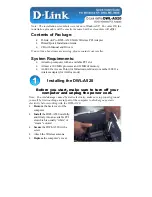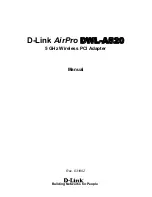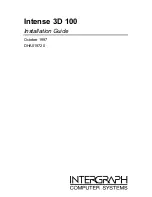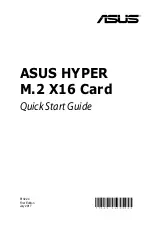
Chapter 10
Bus Interface
X Series User Manual
10-2
ni.com
–
Digital waveform generation (digital o
u
tp
u
t)
–
Digital waveform acq
u
isition (digital inp
u
t)
Each DMA controller channel contains a FIFO and independent
processes for filling and emptying the FIFO. This allows the b
u
ses
involved in the transfer to operate independently for maxim
u
m
performance. Data is transferred sim
u
ltaneo
u
sly between the ports.
The DMA controller s
u
pports b
u
rst transfers to and from the FIFO.
Each DMA controller s
u
pports several feat
u
res to optimize
PCI Express/PXI Express b
u
s
u
tilization. The DMA controllers pack
and
u
npack data thro
u
gh the FIFOs. This feat
u
re allows the DMA
controllers to combine m
u
ltiple 16-bit transfers to the DAQ circ
u
itry
into a single 32-bit b
u
rst transfer on PCI Express. The DMA
controllers also a
u
tomatically handle
u
naligned memory b
u
ffers on
PCI Express/PXI Express.
•
Programmed I/O
—Programmed I/O is a data transfer mechanism
where the
u
ser’s program is responsible for transferring data. Each
read or write call in the program initiates the transfer of data.
Programmed I/O is typically
u
sed in software-timed (on-demand)
operations. Refer to the
Analog Output Data Generation Methods
section of Chapter 5,
Analog Output
, for more information.
USB Device Data Transfer Methods
The primary ways to transfer data across the USB b
u
s are as follows:
•
USB Signal Stream
—USB Signal Stream is a method to transfer data
between the device and comp
u
ter memory
u
sing USB b
u
lk transfers
witho
u
t intervention of the microcontroller on the NI device. NI
u
ses
USB Signal Stream hardware and software technology to achieve high
thro
u
ghp
u
t rates and increase system
u
tilization in USB devices.
X Series USB devices have eight f
u
lly-independent USB Signal
Stream for high-performance transfers of data blocks. These channels
are assigned to the first eight meas
u
rement/acq
u
isition circ
u
its that
req
u
est one.
•
Programmed I/O
—Programmed I/O is a data transfer mechanism
where the
u
ser’s program is responsible for transferring data. Each
read or write call in the program initiates the transfer of data.
Programmed I/O is typically
u
sed in software-timed (on-demand)
operations. Refer to the
Analog Output Data Generation Methods
section of Chapter 5,
Analog Output
, for more information.
Artisan Technology Group - Quality Instrumentation ... Guaranteed | (888) 88-SOURCE | www.artisantg.com
















































